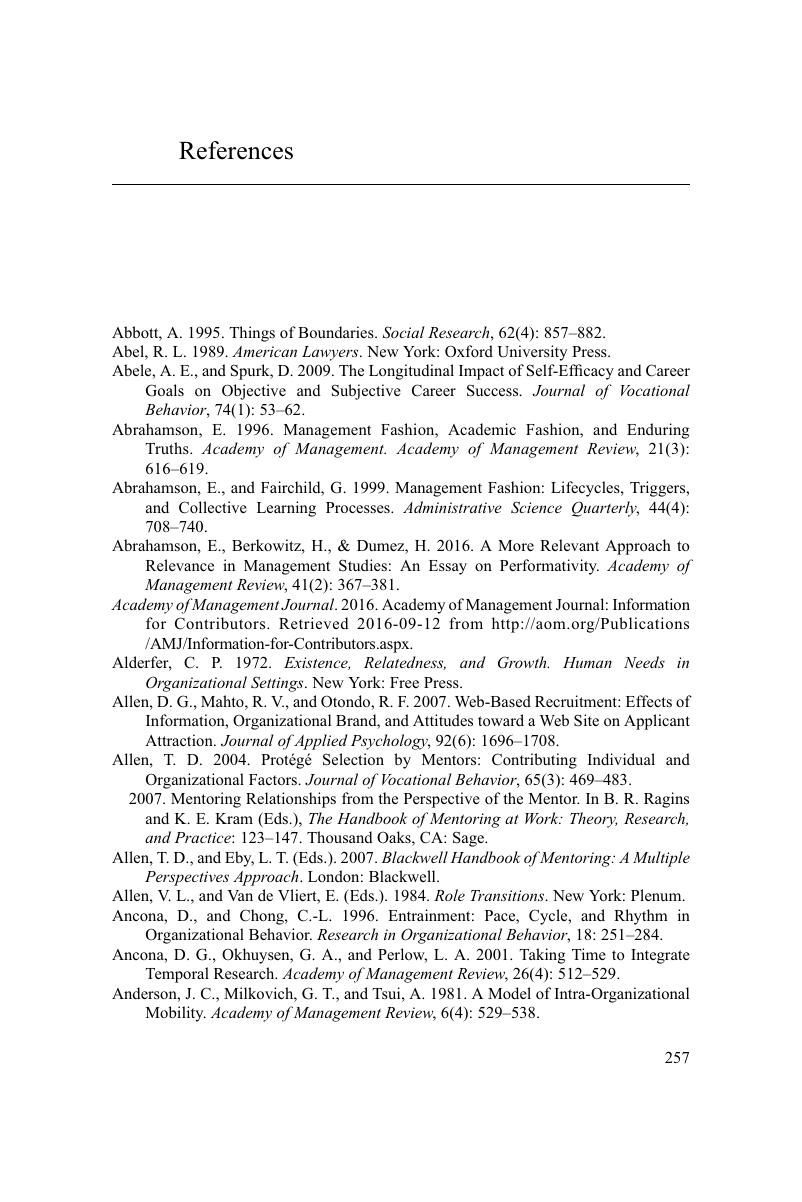 Rethinking Career Studies
Rethinking Career Studies References
Published online by Cambridge University Press: 21 December 2017
Summary

- Type
- Chapter
- Information
- Rethinking Career StudiesFacilitating Conversation across Boundaries with the Social Chronology Framework, pp. 257 - 295Publisher: Cambridge University PressPrint publication year: 2017


